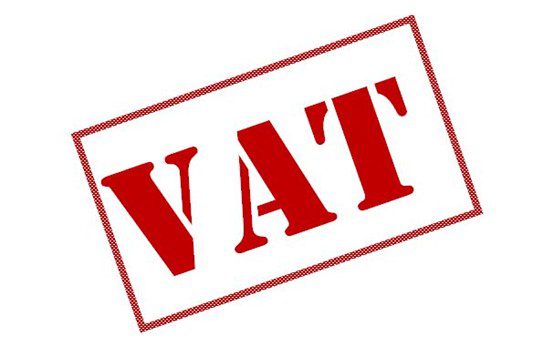China Banks Loans
In recent discussions with the Bank of China (BOC) and the Industrial and Commercial Bank of China (ICBC), two of the “Big Four” state-owned commercial banks, it has been confirmed that local Chinese banks can indeed grant RMB loans to Foreign-Invested Enterprises (FIEs). However, the application of these policies can be somewhat opaque, as there is often a significant gap between official communication and on-the-ground realities in China. This article aims to shed light on the current loan options available to small and medium-sized FIEs, while also considering the broader economic context and regulatory environment.
Loan Options for FIEs
There are two main options:
Loan on Credit (Short-term Loan)
This type of loan is typically granted for a period of six months. The local bank assesses the risk level of the company based on various factors such as tax credit rating, tax payment amount, and revenue scales. The maximum loan amount is determined accordingly. This loan serves as an emergency business loan to help companies navigate through difficult periods. The interest rate for this loan is approximately 4%.
Loan Under Guarantee (Long-term Loan)
For long-term financing, FIEs can opt for a loan under guarantee. The requirements for this loan include either a parent company guarantee or a property guarantee from a Chinese company, provided the company or legal person has real estate in China. The financing cap for this loan is calculated as twice the owner’s equity in the financial statement, with an interest rate around 3%.
A New Possibility – Loan Against the IP
An exciting development – this year, the government started encouraging banks to grant loans using intellectual property such as trademarks, patents, and other IP assets as collateral to support smaller innovative companies.
The accessibility of this option for foreign-invested companies is yet unclear, besides, IP remains difficult to value in China. Whether or not foreign businesses would want to put their intellectual property rights on the line is a separate discussion.
Protect your IP and register your trademark in China today.
Preferences and Practices
At ICBC, it is observed that most FIEs prefer loan on credit. When a parent company guarantee is required, headquarters often opt to grant a shareholder loan (see below) to the Chinese subsidiary rather than securing a bank loan. This approach allows the headquarters to earn interest on the loan, which can be seen as a method of profit repatriation.
Regulatory Environment
Both BOC and ICBC have indicated that they cannot provide specific regulations on loans to FIEs, as these are internal and confidential documents. Each loan is personalized and assessed on a case-by-case basis. According to the new Foreign Investment Law of the People’s Republic of China, Chapter II Investment Promotion, Article 17, foreign-invested enterprises are permitted to finance through public offerings of stocks, corporate bonds, and other securities, as well as other financing methods.
Common Challenges Faced by FIEs
- Credit Risk Perception
Banks generally perceive FIEs, especially small and medium-sized ones, as high-risk borrowers. This perception is due to factors such as limited credit history in China and potential currency exchange risks.
Another probability is that the loan application will be successful, however, the granted amount is unreasonably low due to perceived risks.
- Collateral Requirements
Many banks require substantial collateral to secure loans. For FIEs, this often means providing guarantees from the parent company or using real estate in China as collateral. This can be a significant hurdle, especially for newer or smaller enterprises that may not have sufficient assets in China.
- Regulatory and Policy Uncertainty
The regulatory environment in China can be complex and subject to change. Additionally, banks may have internal policies that are not publicly disclosed, adding another layer of uncertainty. This uncertainty can create additional risks for FIEs, making it more difficult to plan and execute their business strategies effectively.
- Information Asymmetry
Banks often face difficulties in assessing the creditworthiness of FIEs due to a lack of transparent and reliable financial information. This information asymmetry can lead to higher perceived risks and, consequently, higher interest rates or stricter loan conditions. Investing in financial reporting transparency improvement will be beneficial to build trust with local banks and improve chances of securing loans.
- High Interest Rates
Due to the perceived higher risk, FIEs may be offered loans at higher interest rates compared to local enterprises.
- Lengthy and Complex Application Processes
The loan application process can be lengthy and complex, involving extensive documentation and multiple rounds of assessment. This can be particularly challenging for FIEs that may not be familiar with local banking practices.
Shareholder Loans
Intercompany loan is a common method of financing Chinese operations through a foreign loan to the subsidiary. Maximum loan amount is calculated based on either one of two models:
- Debt-Equity Gap Model 投注差模式
The Debt-Equity Gap Model was first introduced in 1987. According to this model, the maximum foreign loan amount is the difference between the total investment amount and the registered capital stated in AOA:

- Net Asset Model 全口径宏观审慎模式
The Net Asset Model allows more flexibility; however, the calculation will depend on the total amount of net assets. The foreign loan amount will be based on the latest annual statutory audit report:
(The Amount of Net Assets) x (Leverage Ratio) x (Macro-Prudent Adjustment Parameter)
Prior to injection, the foreign loan must undergo mandatory registration with State Administration of Foreign Exchange (SAFE) and, depending on a case, filing with The National Development and Reform Commission (NDRC).
Conclusion
Coming back to the topic of local loan issuance, the information provided by BOC and ICBC offers a glimpse into the financing options available to FIEs, it is important to approach these opportunities with a degree of caution. The gap between official communication and actual practice can be substantial, and each case is unique.
The economic slowdown during and after COVID19 has prompted the Chinese government to adopt more flexible policies to attract and retain foreign investment. As China continues to navigate its economic challenges, the evolving regulatory landscape may present new opportunities and considerations for foreign-invested enterprises.
This article reflects the information obtained from banks during autumn 2024, but it is important to note that the application of these policies can vary significantly in practice and change over time. As always, it is advisable for companies to seek professional help when navigating the complexities of financing in China.







